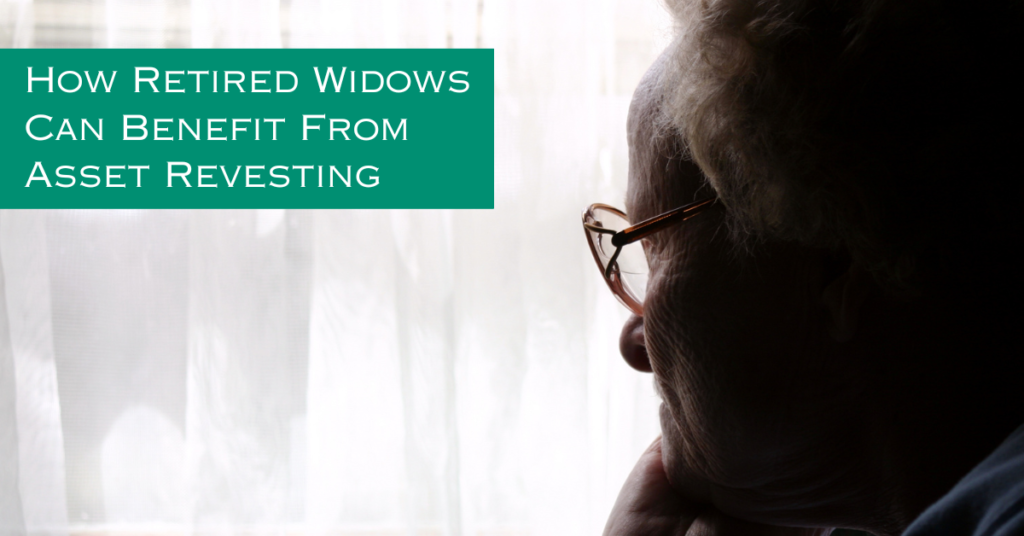Customer Profiles: Retired Widow Asset Revesting

Alice is a sixty-seven-year-old retired school teacher. She has always had a vested interest in her personal finances, which have plummeted since her husband Randall’s death four years ago.
Since that horrible day, Alice has been depressed and struggles to find the motivation to maintain a portfolio. She spends her days reading novels and consuming mindless television programs—focused more on escapist endeavors than asset management. As a result, her ignored portfolio was floundering, and cash was starting to get tight.
When Randall was alive, the couple had a financial advisor; however, the man always refused to address Alice directly. Though odd and somewhat offensive, this did not seem like a big deal at the time, as Randall handled their investments. But after his death, Alice may not have had the energy for much, but she did for the long overdue task of getting a new advisor.
Being that she didn’t know any offhand, she went to a financial advisor at her local bank. This advisor recommended laddered bonds, explaining that each bond would have a different maturity date and interest rate. The further out the maturity date, the higher the interest rate. And because bonds have a guaranteed rate of return, she would be profiting regardless of market volatility. Her advisor further reassured her that large investment firms like Schwab and Fidelity commonly use bonds.
In her haste to get this done and secure the bonds, Alice did not consider how she would maintain her lifestyle in the meantime. Alas, she soon learned that she could not live off the interest rates the bonds generated alone. This meant that Alice would either have to downgrade her lifestyle or dip into her principal, neither of which was an appealing option. In her current state of adjusting to life without her husband, Alice wasn’t doing much outside the house anyway, so curtailing her spending was not much of a problem.
As the months passed and her grief became more manageable, Alice realized it was time to come out from hibernation and slowly make some changes. Not quite ready to be back on the social scene, she opted to focus on her finances first. While Alice knew she needed more active, strategic management of her portfolio that focused on growth and capital preservation, she was realistic enough to know that she wanted a hands-off approach that would allow her the time and space to learn who she was without her husband.
Of course, Alice knew of the strategies that her parents and husband used – diversification, 60/40 split, buy-and-hold, and so on. She also remembered the difficult years when recessions or market corrections happened. It took a long time to claw back what they had lost and even longer to grow their accounts from previous highs. Something different is what Alice was looking for. Allotting a couple of hours a day to research and learn, it wasn’t long before Alice hit on something that she thought could work.
Asset Revesting was a method of investing that held assets that were rising in value only, sold assets as they began to fall, protected capital investment, and grew accounts slowly by locking in profits and setting stops. What it did not do was jump in and out of the hottest stock, hold assets that were in free fall, enter or exit positions based on news, or make wild promises that invariably made no one any money but the person spouting such nonsense.
So where did her bonds fall into this asset revesting strategy, or did they? When Alice looked at the actual performance of bonds over the last fifteen years, she could see volatility increasing, with 10 to 20 percent swings becoming standard in more recent years. She learned that while volatility can be suitable for returns, it can also gut a portfolio. Worse, the larger the losses, the higher future gains needed to be to get back on track. It didn’t take her long to realize that this sounded a lot like what happens with the buy-and-hold strategy.
Wanting to learn more, Alice found an asset revesting newsletter that answered a lot of her questions as she wanted to understand the underlying strategy better. Reading on, Alice discovered that asset revesting was a method of interpreting market signals to analyze a hierarchy of investments to find the one offering the most potential return and indication of upward movement. When signals indicated that a position was likely stagnant or about to fall, it meant moving capital out of that position and deploying it to the next most advantageous one on the hierarchy. Even better, this particular newsletter offered the option to have the signals autotraded.
Alice decided to try this for a few months with a portion of her account and found that not only was her capital well preserved with the protective stops she placed, but she could also generate an income to help support her post-retirement lifestyle. Once Alice proved to herself the strategy worked, she decided to sign up for the autotrading service. A little time spent pulling together the needed documents was well worth the time she saved executing the trades herself. And actually seeing her account grow without interference from her, well, it was exactly what she had been hoping for when starting on this investment journey.
With that aspect of her life running smoothly, it was time to shift from living her life inside her home to branching out to see her family and friends once again.
